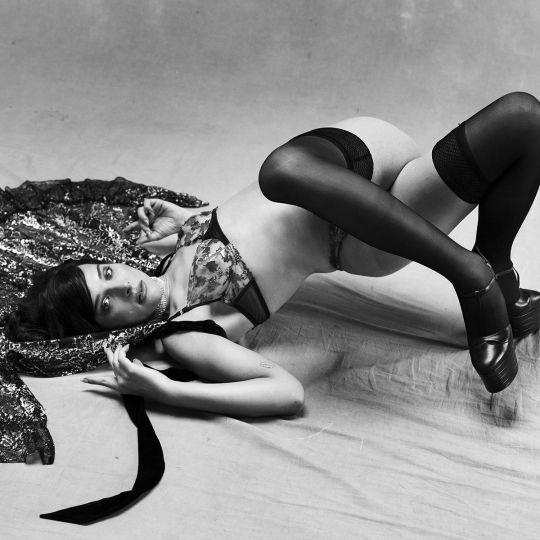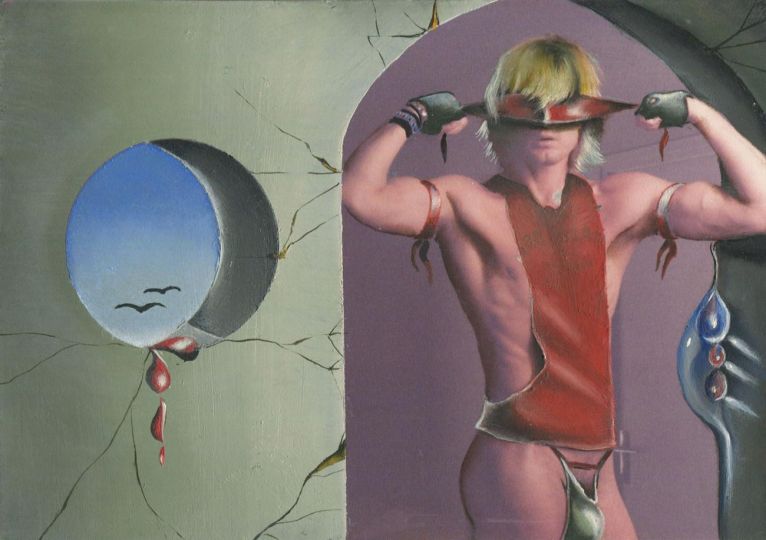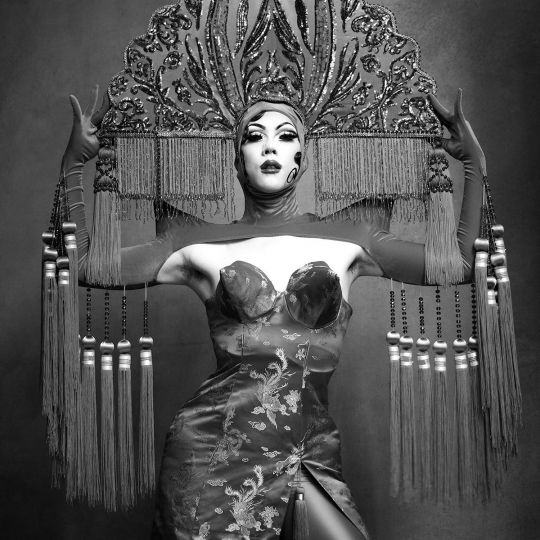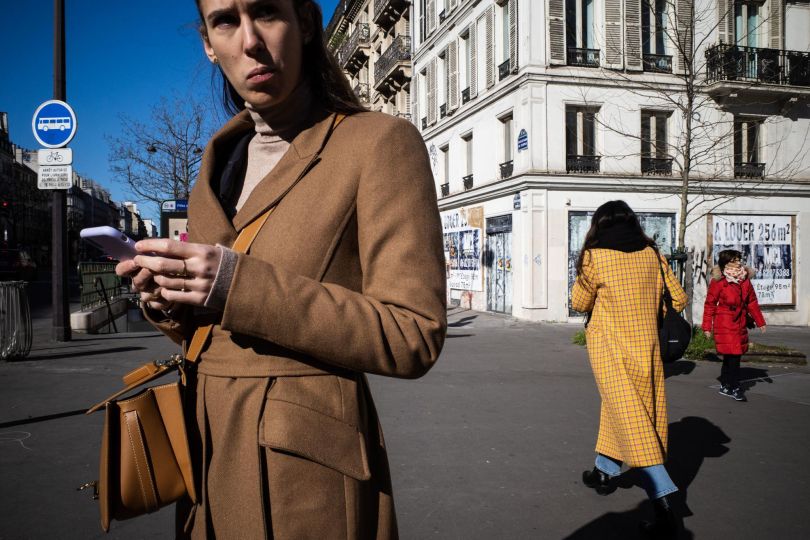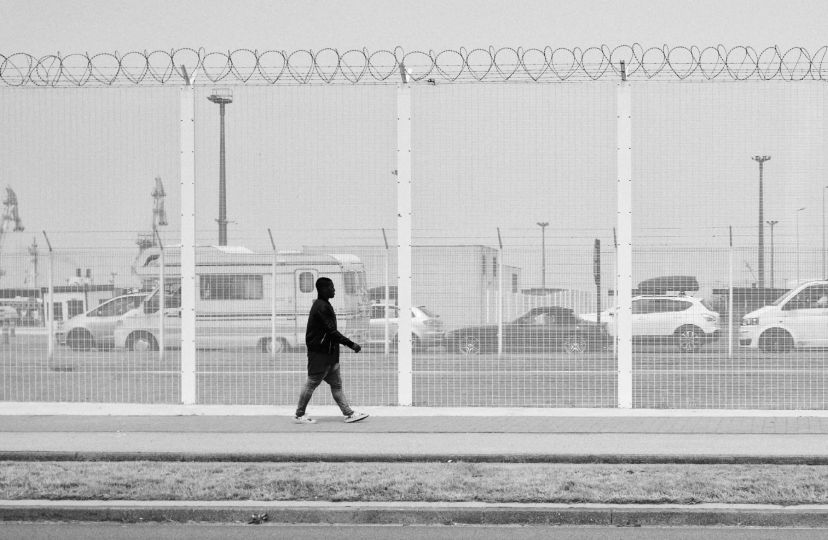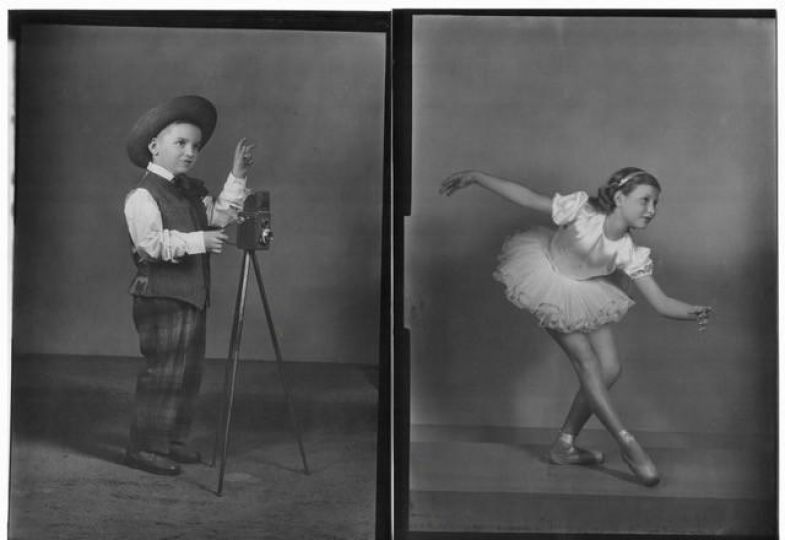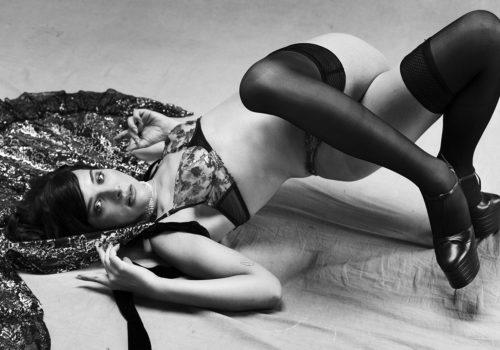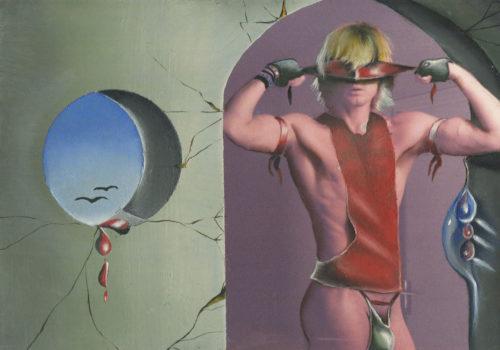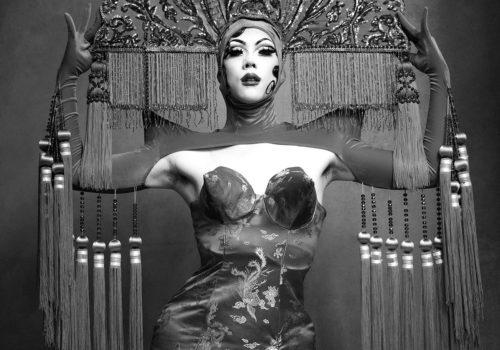His name: Bertrand Cardon. He is a photographer. Locked in his home for the past few weeks, he opened his archives. And there found wonderful images of a great lady of fashion photography: Deborah Turbeville with whom, for 35 years he shared a great friendship! He tells us :
It was a day in May, in 1981, already a historical period, that Rénate Gallois-Monbrun called to ask me if I would agree to assist one of the photographers she represented who was coming to Paris to shoot a feature for Vogue US. I was already working as a freelance for Rénate and her photographers, Eva Séréni, Sarah Moon, Deidi Von Schwaven, and others.
Of course, it was my real job at the time, ensuring production, management, lighting, scouting and responsibility for the success of the shoot until the films were released at the lab. ( A tribute, by the way, to Georges d’Iconolab, in the Marais, who worked wonders)
I was used to it. No stress for me who had worked in the studio “Clic-Clac” rue Daguerre (Today Daguerre studios) as a gofer at first, up to studio manager when I left them.
Full of memories of sets with Helmut Newton, André Carrara, Peter Lindberg, even a studio session with Horst who was already very old. And then all a week on the bike with Dick Avedon for some collections (I forgot the year).
What better experiences on the job for a very young passionate photographer like me in those years 70-90.
These meetings brought me, taught me more by their artistic creativity, their singular universe based on a history of Art that I did not have, than on technique, which they often lacked.
So started my bond with this first shoot with Déborah in Paris. Then eight years of close collaboration. A real friendship too. We almost did not have to speak. I knew her universe, she knew that I knew it and shared it.
We had this privileged relationship, outside the mode of representation vis-à-vis the media and prime contractors.
I remember that often, during trips to Europe, through the palaces reserved by the Condé Nast group, Déborah told me:
Bertrand, you don’t say anything … We both ate out in vintage small restaurants. Because all this permanent representation of her image weighed on her. All these pretenses were far from the interest she had in her creations and why she was there.
All this fashion universe, prestigious editorials, however which gave birth to her as a photographer and artist, to which she also collaborated she eventually got bored with it.
The purchase of her house in Mexico was a breath of fresh air for her, an artistic return to the simplicity of things and people.
30 years after our collaboration in the 80s, we are still conversing, still exchanging. I went to visit her in New York. She took me to dinner Downtown in a small restaurant where Woody Allen used to come and play the clarinet.
We had this relationship that goes beyond notoriety, this complicity in the passion for the image. In fact, an accomplice friendship in which we found ourselves.
In our travels, we talked more about cinema, painting, trivial stories than photography.
I remember Deborah who seemed cold, distant, ghostly in her outfits for many people. But who in the privacy still had the spontaneity of childhood and a sense of humor.
I remember that evening at the Danieli in Venice, where she called me in my room to tell me: This dinner with the whole Vogue US team bores me, lets leave them, let’s not say anything and go to the back alleys of Venice to find a workers’ bar to eat squid. We did it. She was like a child who had made a willful mistake. We had a lot of fun, thinking of the Vogue editor who probably said to herself: We lost Deborah for tomorrow’s shoot.
Another time at the Château of Vaux le Vicomte, still for the US magazine, The Vogue limousine was waiting for Deborah rue Delambre, at the Hôtel Lenox. I had to join them there and go to the shooting place. Arrived, scouting done, Hairstyles and make-up launched, the editor, a little stressed asked Deborah: But where are your camera cases? Déborah came to see me and said – Oh, Bertrand, I forgot them at the Hotel – Fortunately I always had my old Nikkormat on me with a 50mm 1:8.
It’s also a bit like the story of Helmut Newton in Clic-Clac, rue Daguerre, who arrived one day in the 80s on set ready to shoot, the whole Vogue team waiting feverishly, with just a KODAK INSTAMATIC around the neck. All the editors were green ..!
All these stories and anecdotes delight me because ultimately, it is not me or the technical support that make the final image. It’s really the artistic creative world of the author. The realisation is only part of it.
And then in 1987 on an order from Globe magazine (cultural cherished child of F. Mittérand) Déborah Turbeville, was asked to do a fashion report on the young generation of opera singers at the Palais Garnier with her signature style, she called me on the morning of the second day of shooting and said:
“Oh, Bertrand, tell them that my back is blocked and I can’t come. Make the pictures for me. In fact I don’t feel it, this subject is not for me. ”
Malaise..in the morning of the 2nd day at the Palais Garnier. I’m calling the magazine’s art director. What do we do ? He accepts that I continue the images of the reportage.
The whole team is ready and the opera artists are not easy people. The knot in the belly, but carried by the atmosphere, I launch into other images from the second day. With the film and cult emulsion of Deborah’s work: the 3M 1200 Iso.
The result was validated by the editorial staff for publication. But with the expected signature: Déborah Turbeville.
Déborah insisted on co-signing this series with me. She will really be the only person on my journey who really encouraged me to leave her to develop my own language.
I keep for her an eternal gratitude and friendship for this.
Bertrand Cardon


